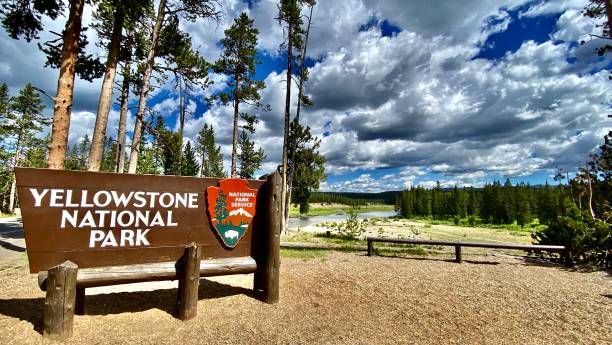When you think of America’s great outdoors, Yellowstone National Park stands out. Known for its stunning natural beauty, it’s a place where you can feel the power of nature. Located mostly in Wyoming, with stretches into Montana and Idaho, Yellowstone covers over 2 million acres. To get there, you can enter through several gateways, each providing unique views. The park is famous for its geysers, hot springs, and rich wildlife. You might catch sight of bison, bears, or wolves. These wonders make Yellowstone a must-see. If you’re planning a visit, knowing the basics helps. Understanding where Yellowstone is and what it offers will ensure you make the most of your trip. For more detailed directions and entrance information, visit this page. Prepare to be amazed as you step into a land untouched by time. Experience it all with respect and admiration for this natural treasure.
Location and Accessibility
Yellowstone lies mainly in the northwest corner of Wyoming. However, its vastness extends into Montana and Idaho. The park’s location makes it accessible from various entry points. These entrances include the North Entrance at Gardiner, Montana, the West Entrance at West Yellowstone, Montana, the South Entrance from Grand Teton National Park, the East Entrance from Cody, Wyoming, and the Northeast Entrance via Cooke City, Montana.
Each entrance offers unique landscapes and experiences. For instance, the North Entrance is open year-round and is the only entrance accessible during winter. The West Entrance is the busiest, with easy access to Old Faithful and the geyser basins. The South Entrance connects visitors to both Yellowstone and Grand Teton National Parks.
Geothermal Features
Yellowstone is famous for its geothermal features. Home to more than half of the world’s geysers, it includes iconic sites like Old Faithful. The park also boasts colorful hot springs, such as the Grand Prismatic Spring. These vibrant geothermal marvels result from volcanic activity beneath the surface.
A visit to the geyser basins and hot springs is a must. The Mammoth Hot Springs, with their terraces of travertine, showcase nature’s artistry. Each site offers a chance to witness the Earth’s geothermal energy in action.
Wildlife Watching
Yellowstone is a sanctuary for diverse wildlife. You’ll find bison, elk, bears, and wolves roaming freely. The Lamar Valley is often called America’s Serengeti due to its abundance of animals. Whether you’re driving or hiking, wildlife encounters are common.
Remember to maintain a safe distance from all animals. Use binoculars or a camera with a zoom lens to observe these creatures safely. The park provides guidelines to ensure both visitor and wildlife safety.
Visitor Centers and Resources
Yellowstone offers several visitor centers. Each provides educational exhibits and information to enhance your visit. The Old Faithful Visitor Education Center focuses on the park’s geothermal features. The Canyon Visitor Education Center explains the geological forces that shaped Yellowstone.
Rangers are available to answer questions and offer insights. Participating in ranger-led programs can deepen your understanding of the park. For more detailed planning resources, you can access Yellowstone’s official site.
Plan Your Visit
Planning your Yellowstone adventure involves choosing the right time to visit. Summer is the most popular season, offering open roads and accessible trails. Spring and fall provide fewer crowds and opportunities to see wildlife in different settings. Winter offers a unique view of the park, with snow-covered landscapes and steaming geysers.
Below is a comparison of the seasonal offerings:
| Season | Weather | Activities |
| Spring | Cool, Rainy | Wildlife Watching, Hiking |
| Summer | Warm, Busy | Hiking, Camping, Geyser Watching |
| Fall | Cool, Fewer Crowds | Photography, Wildlife Watching |
| Winter | Cold, Snowy | Snowshoeing, Snowmobiling |
Respect and Preserve
As you explore Yellowstone, remember to tread lightly. Follow Leave No Trace principles to keep the park pristine. Dispose of waste properly and stay on designated trails. By respecting the park’s rules, you help preserve its beauty for future generations.
Yellowstone National Park is a testament to nature’s power and beauty. By understanding its location and offerings, you prepare for a memorable visit. Enjoy the wonders of Yellowstone responsibly and take home memories that last a lifetime.


